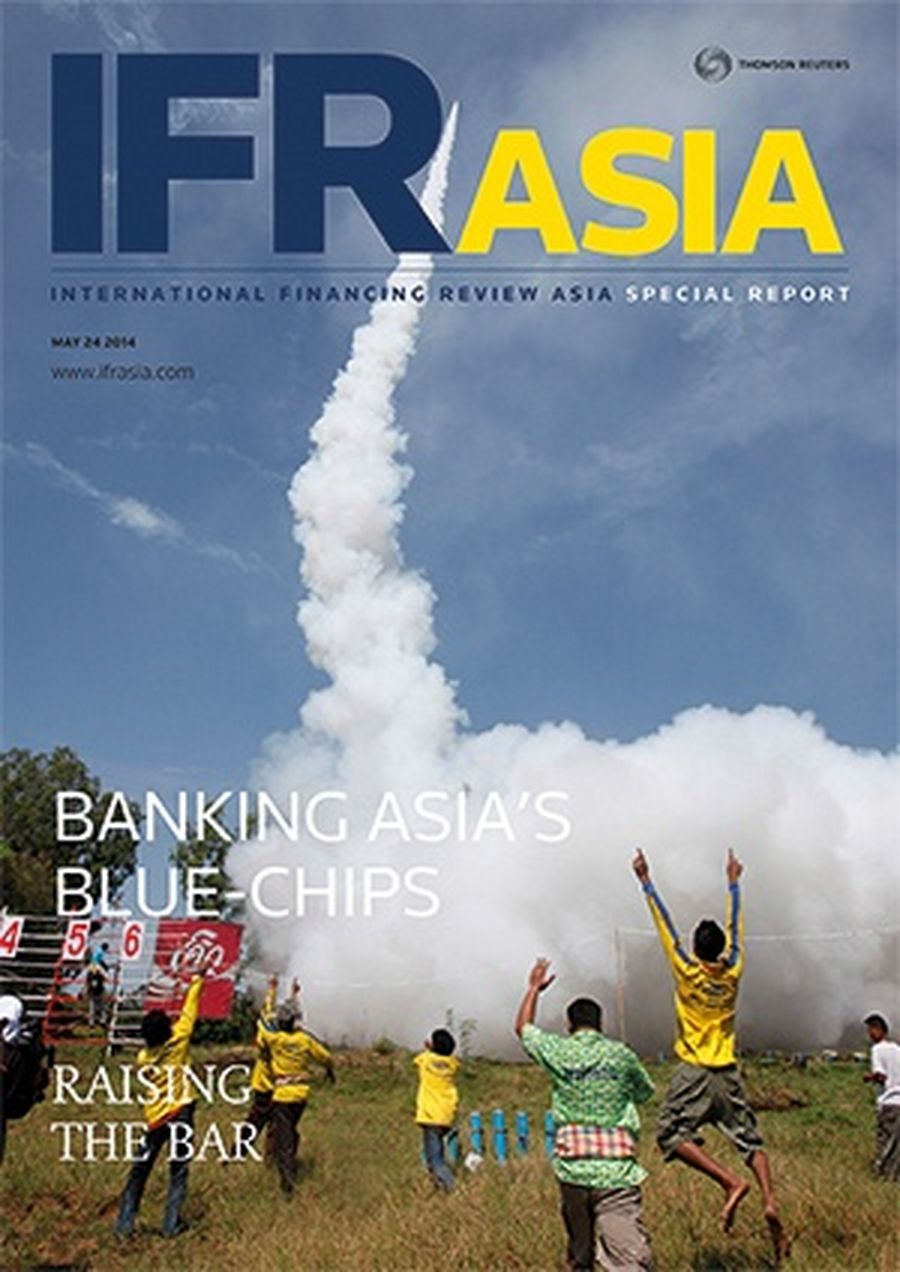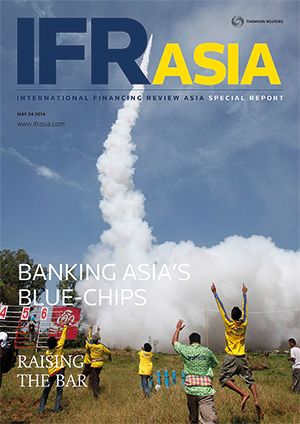
Banking Asia’s Blue-Chips- Raising the bar
Source: REUTERS/Chaiwat Subprasom
Participants in a rocket competition cheer after their rocket was successfully launched during the rocket festival also known as “Bun Bangfai” in Yasothon, north-east of Bangkok.
Asia’s blue-chip companies have always demanded a lot of their bankers. In recent years, however, those demands have begun to shift.
Far beyond insisting on the thinnest pricing for their latest fully underwritten bank loans, many firms increasingly look for partners to help them expand overseas. International financings have ballooned as banks have reined in their balance sheets and more Asian companies have sealed offshore acquisitions.
The evolution of corporate Asia has raised the bar for advisers, investors and issuers. Take China National Offshore Oil Corp’s US$15bn acquisition of Canada’s Nexen in 2012 – the biggest purchase in North America by any Chinese company. CNOOC succeeded where other Chinese bids had failed, winning Nexen’s support for its offer and making the concessions needed to avoid a government veto – a painful lesson from its blocked bid for US-based Unocal seven years earlier. The neatly executed acquisition also came with a comprehensive financing strategy, making full use of the global capital markets.
Bankers say other leading Asian companies, like CNOOC, are becoming more willing to listen to good advice as they step outside of their comfort zones with new growth strategies or venture into new markets. Just as importantly, they are also prepared to pay for it.
The biggest single fee-generating deal of 2013 stemmed from another acquisition – a move from Thailand’s Charoen Pokphand Group for HSBC’s US$9.4bn stake in Ping An Insurance Group of China. When financing for the deal came close to collapse, UBS stepped in with a complex combination of loans and equity derivatives, earning itself a handsome nine-figure sum in the process.
Bold moves from the likes of CNOOC and CP are mirrored in the capital markets, where Asia’s frequent issuers are placing greater emphasis on reputations and market profiles than on pricing to the last basis point.
Investment-grade bond fees, under pressure for years in South Korea and Hong Kong, have stabilised (admittedly at lower levels than in many more mature markets). Demand for more complex products, such as corporate hybrids, is increasing.
Yet, the picture varies markedly across different markets. When it comes to the all-important IPO, there are concerns that Asia’s issuers are becoming less sophisticated, not more.
Chinese pork producer Shuanghui International appeared to be set for a stunning capital markets coup in April, when it launched a Hong Kong listing less than a year after the transformational acquisition of far larger US peer Smithfield.
WH Group, the combined entity, set out with aggressive timing and a lofty valuation, but its decision to hire a record 29 bookrunners for the IPO raised questions about its ability to control the process. WH was eventually forced to pull its IPO, despite dropping its target from US$5.3bn to US$1.9bn.
Bloated syndicates, of course, are the result of overcapacity in Asia’s equity capital markets, but the phenomenon goes against the trend towards a more sophisticated approach to investment banking. Having raised the bar, Asian companies – and their advisers – need to keep it up.
To see the digital version of this report, please click here.
